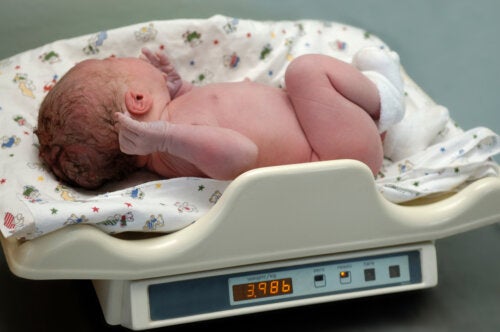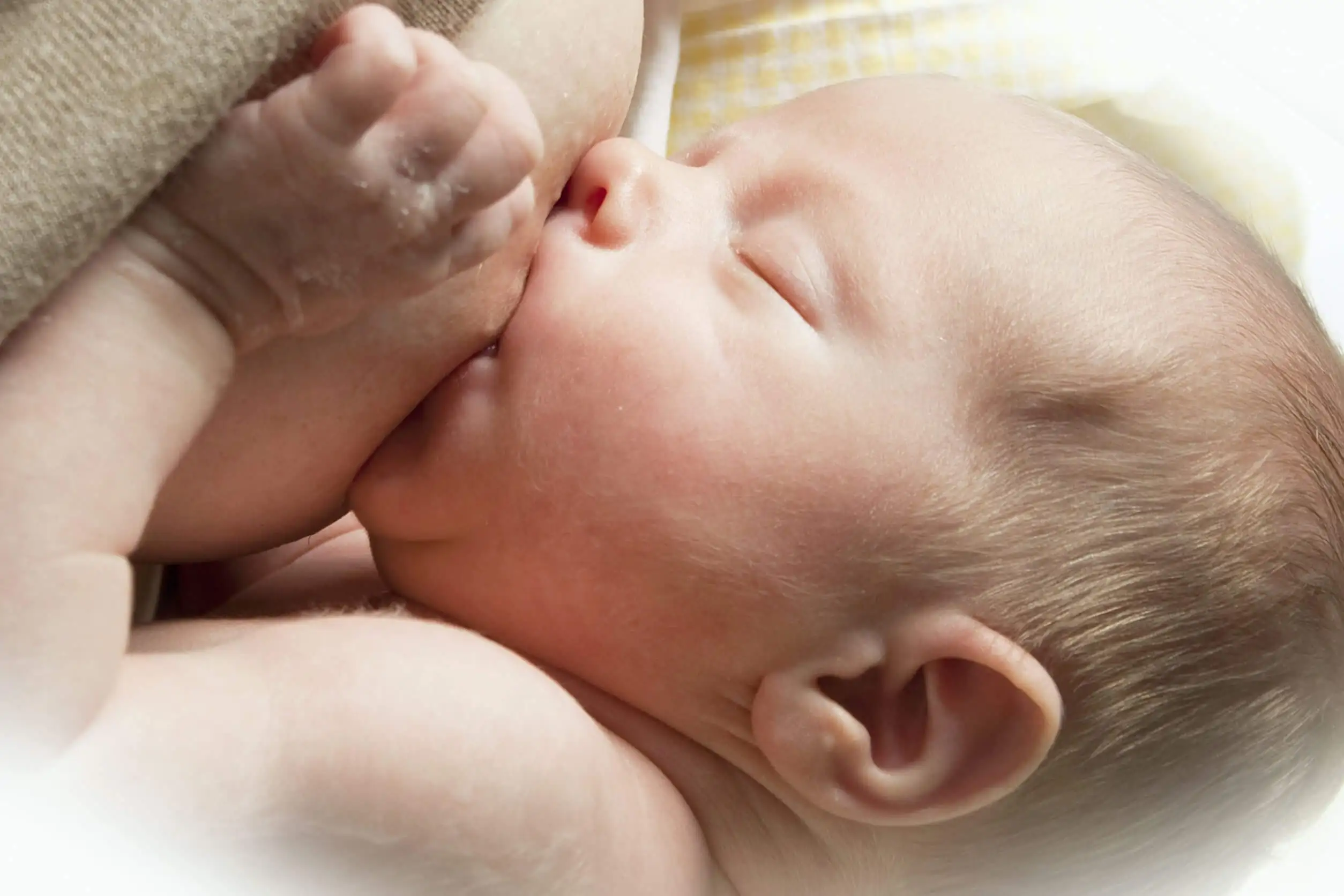Baby's First Visit to the Pediatrician: What to Keep in Mind


Written and verified by the doctor Maryel Alvarado Nieto
A newborn’s first contact with a physician occurs in the maternity ward. There, the newborn is comprehensively evaluated to rule out any problems, whether congenital or associated with the labor itself. However, this encounter doesn’t allow for a complete assessment of the baby’s adaptation to its new environment. Therefore, an early first visit to the pediatrician is essential.
This initial consultation will serve as a link from the prenatal obstetric assessment to the baby wellness check-up. These periodic check-ups assess the newborn’s general condition and how he/she is developing as he/she grows.
When is the ideal time to take the baby for his/her first visit to the pediatrician?
After discharge from the maternity ward, which usually occurs when the newborn is 2 or 3 days old, he/she should be evaluated again by a pediatrician. It’s best that the visit occurs between 48 and 72 hours after discharge – that is, when the child is 3 to 5 days old and before the first week of life.
This period is ideal to reevaluate a full-term baby who has not had any complications during delivery. Although the visit to the pediatrician in the first week of life is recommended by experts, in some cases, it’s actually often postponed for more than 10 days.
The importance of assessing the newborn in the first week of life
The first days of life are crucial for a baby, since this is the period in which the newborn adapts to its new environment. At the time of birth, physiological changes occur in the infant, such as breathing and feeding. These functions were carried out by the fetoplacental circulation.
At birth, the newborn begins to receive its nourishment through breastfeeding. In the first days, it provides the baby with a scarce yellowish solution called colostrum. It’s rich in immunoglobulins that help the baby defend itself against pathogens and diseases.
The first visit allows you to monitor the effectiveness of breastfeeding. This helps the baby begin to regain the recommended weight for his or her age.
Similarly, seeing a pediatrician in the first week of life positively affects breastfeeding attachment. This provides better results than when there is no advice from a specialist.

We think you may also enjoy reading this article: When to Introduce Legumes into a Baby’s Diet?
Looking for serious problems on the baby’s first visit
There are conditions that can show their first manifestations a few days after birth. Among these are hyperbilirubinemia, infections, and some heart diseases. Therefore, a visit to the pediatrician in the first week of life is key to diagnosing these conditions early.
Similarly, other more common disorders at this stage, such as hypernatremic dehydration, have a better resolution when treated in a timely manner. For this, it’s necessary to recognize them with an early visit to the pediatrician.
Clearing parents’ doubts
Parents begin to have a lot of concerns about their baby’s care. In part, this is due to the fact that they no longer have the support of the trained staff they used to have in the maternity ward.
When parents find themselves alone at home, they tend to turn to advice from people close to them, who, despite having the best intentions, may give unwise recommendations. This can contribute to the emergence of new problems in a newborn. The same happens when unreliable advice is sought on the Internet.
Therefore, the best option is always to seek the advice of a qualified pediatrician, who will clear up any concerns during the first consultation and will also foresee the various situations to be faced. He/she is not only a doctor who treats illnesses, but also a guide in the education of the parents regarding the care of their child.
What does a pediatrician evaluate during the first consultation?
Before exploring the newborn, the pediatrician will make a detailed review of the obstetric history, starting with the clinical history. Through a thorough interrogation, the pediatrician will be able to obtain information regarding the following:
- Characteristics and frequency of bowel movements
- Illnesses during pregnancy
- Type and duration of labor
- Gestational age
- Weight and height at birth
- The type of feeding
The physical examination of the newborn during the first visit to the pediatrician
After collecting all the necessary information about the baby, anthropometric measurements will be taken, i.e. weight, height, and some important circumferences (head, thorax, and abdomen).
The baby will then be examined, systematically evaluating each device and system. Unlike the complete physical examination of older children, an additional thorough examination of the following is of vital relevance:
- Fontanelles
- Hearing
- Genitalia
- Fundus
- Umbilical cord
Likewise, the pediatrician will evaluate the newborn’s own reflexes to request relevant complementary studies, the results of which will confirm or rule out the findings.
Checking the fontanelles is a basic step in the first pediatric consultations that should never be overlooked.
Like this article? You may also like to read: This Is Why Johnson & Johnson Will Stop Selling its Baby Powder
What to take to the baby’s first medical evaluation
Although it may seem trivial, formulating a list of questions and having them in writing when going to the pediatrician will be of great help. This way you make sure you don’t forget anything, which is more common than it may seem.
Likewise, it’s advisable to bring any documentation or report on the baby’s discharge to the first consultation. It’s also a good idea to bring any treatment that the mother and the newborn have undergone.
There are some situations that are considered alarming. When any of them occur, it’s important to consult your pediatrician, even if you don’t have a scheduled visit. They include:
- A depressed or bulging fontanelle
- The absence of bowel movements
- The presence of vomiting or diarrhea
- Yellowish or bluish skin color
- Respiratory difficulties
In these cases, the baby should be taken promptly to the emergency room for medical evaluation. These are not the most frequent situations, but it’s better to be alert.
All cited sources were thoroughly reviewed by our team to ensure their quality, reliability, currency, and validity. The bibliography of this article was considered reliable and of academic or scientific accuracy.
- Kliegman, R.; Stanton, B.; St. Geme, J.; Schor, N.; Behrman, R.; Nelson. Tratado de Pediatría; 20ra Edición; Elsevier España; 2016
- Cruz-Hernández, M.; Jiménez, R.; Tratado de Pediatría; 9na Edición; Editorial Océano; Barcelona, España; 2007
- Asociación Española de Pediatría de Atención Primaria; Estudio sobre la primera visita de los recién nacidos en atención primaria y sus implicaciones para la salud infantil y la lactancia materna; Sevilla, España
- Grupo Asesor Técnico para la Pediatría de Atención Primaria; Atención durante las primeras 48 horas del alta de maternidad en la consulta de enfermería y/o pediatría: procedimientos que aseguren esta disposición; 2013
This text is provided for informational purposes only and does not replace consultation with a professional. If in doubt, consult your specialist.








